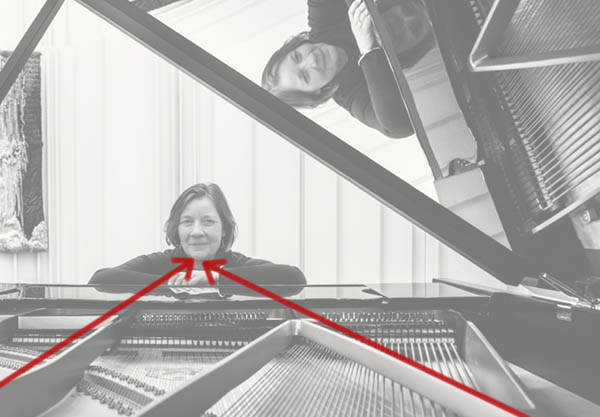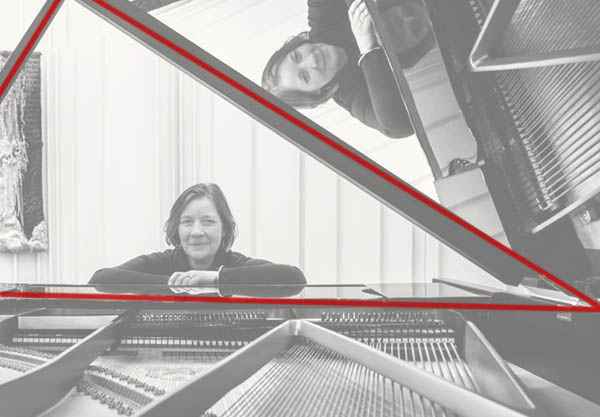25 Dec How to photograph like Arnold Newman
How to photograph like Arnold Newman
“But Tim, he is an environmental portrait photographer you know. What is he doing in a travel blog and why would you want to show us how to photograph like Arnold Newman?”
Yes, okay, you got us! We know that, but while most travel photography revolves around places and landscapes, one of the interesting things about travel are the wonderful (and occasionally weird people that you meet). While most photographs of people we meet when travelling are quick images, there are times when we have the opportunity to create more in-depth photographs. The more you know about different photographers’ styles, the more you can develop your own unique one. This is why we’d like to show you how to photograph like Arnold Newman.

Using Arnold Newman’s style to photograph the Pianist
One of the things that Ally loves, is talking to people. Put her on a train, plane or crowded bus and by the end of the trip she will have made a new friend and know their life history … well almost. I, on the other hand, in spite of spending my life talking to groups of people as a trainer, am not so sociable. This means that Ally is far more inclined to create the instant and spontaneous photographs of people whereas I prefer to get to know them first and then photograph them in a very set up manner, so photographing in the Arnold Newman way just works for me.
If you haven’t seen the other articles in our “How to photograph like …” series, we have Michael Kenna , Edward Weston and Ansel Adams.

Not in the Arnold Newman style, this Cape Town Flower Seller was photographed in under 5 mins by Ally, but you can see the beautiful rapport she has with her subjects.
So, here is how to Photograph like Arnold Newman
Now if you don’t know Arnold Newman’s work, then have a look here. I am sure you will recognise many of his images. Whilst he photographed a few images in colour, he is primarily known for his black and white work. See our thoughts on what makes a good black and white image.
So how do we do that?
Let’s start by looking at what makes an Arnold Newman photograph unique.
On looking at his environmental portraits, the first thing that struck me was the overriding dark and haunting feel that many of them have. Not that all his images are dark per-se, but they ooze that moody and serious feel that seems to personify a lot of the great artists and political figures that Newman photographed.
The next thing that I noticed in his portraits was a wonderful 3 dimensional look that they have. No long lens, no wide aperture, so, very little bokeh here then! (Bokeh = out of focus-ness for those of you who are not au-fait with super-photographic trendy terms!)
His lighting is another area that is very Newman. Very deliberate light and shadows that are perfectly controlled to create the correct ambience and contrast for the individual subject.
So where to start
Let’s look at the subject in their environment.
There is more to an environmental portrait than popping the subject in a scene related to their hobby or occupation. Arnold Newman is a master at composition so let’s start by composing our subject in a pleasing way.
Design features to look for:
- lines that lead in to the subject
- symmetry
- repetition
- negative space
- rule of thirds.
For my pianist I saw the repetition of the strings leading to her, the reflection of her in the black piano lid and the lines as my main environment composition elements.
I also really like the large white negative space like silence just waiting to be filled by the piano sound.

Subject on the thirds

Lines pointing to main subject

Triangle holds the subject in the negative space

I removed the distracting wall hanging with the content aware fill tools in Photoshop
Lighting
To photograph like Arnold Newman you need to have control over your lighting.
Adding light
If like us you are traveling light you probably don’t have a full lighting kit with you however there are other ways to get light to do what you want it to do. Reflectors. Anything can be a reflector from a travel fold up circle type to an old white shirt you have in your backpack. A reflector can be highly reflective and harsh ( think tinfoil) or soft and gentle (old white T-Shirt).
These reflectors can be used in your scene to add light to darker areas and augment details you wish to show the viewer.
Subtracting light
This is the opposite effect. Use a black reflector to remove light from overly bright parts of the image or to darken down areas to get that unmistakable Arnold Newman heavy shadow on face signature look.
We used a reflector to add to the face details and then used burning in at the processing stage to darken down some unwanted details. See our tutorial on dodging and burning.
Although we used softer lighting as we didn’t have a full lighting kit with us, these techniques enabled us to increase the image contrast. However, to truly photograph like Arnold Newman, we should have had more side lighting.

Silver reflector to add harsh light to the subject
Subject’s demeanour
Most of Newman’s subjects are serious to the point of being sombre. These images are not ‘happy snaps for the family album’ and the serious look, directly into the camera, helps us to see into the subject’s soul.
We find asking the subject to think about their art, music or profession usually brings a deep look into their eyes and also helps them to relax and not concentrate on what we are doing with the camera.
You are unique
As with all our ‘How to photograph like….’ series, use your favourite photographers to help you find your own style. Learning from them might mean mimicking their work at first, but after a while you will add your own uniqueness to your images. Arnold Newman’s portraits look the way they do, not because of his technique, but because he had an amazing way of seeing his subjects. Every one of us has a unique way of looking at people and we should embrace that difference and use it to create our own unforgettable images.


No Comments